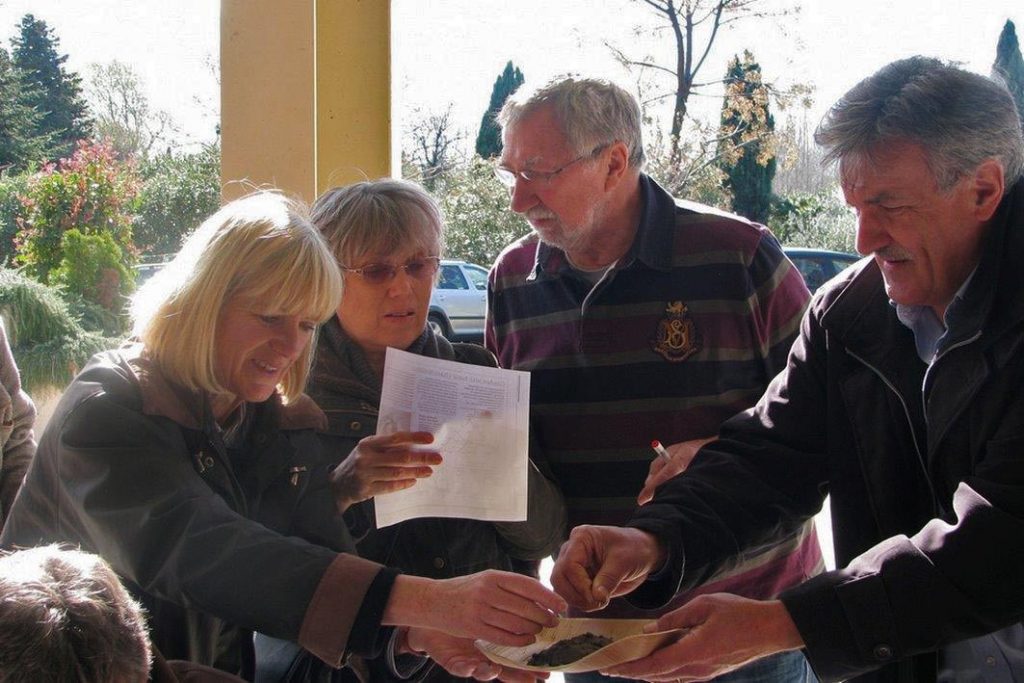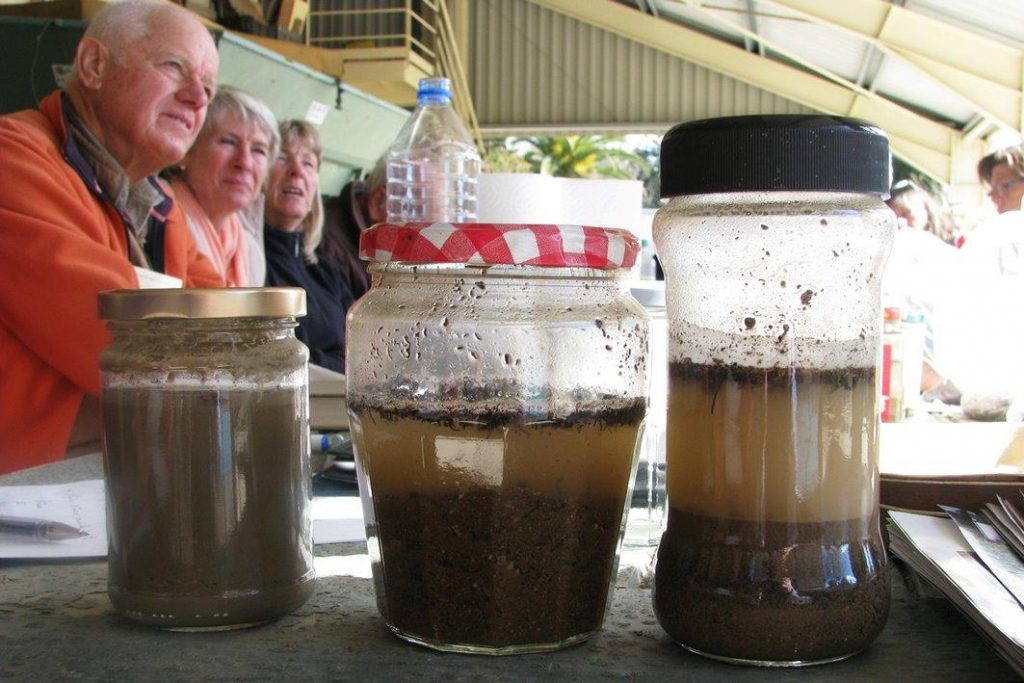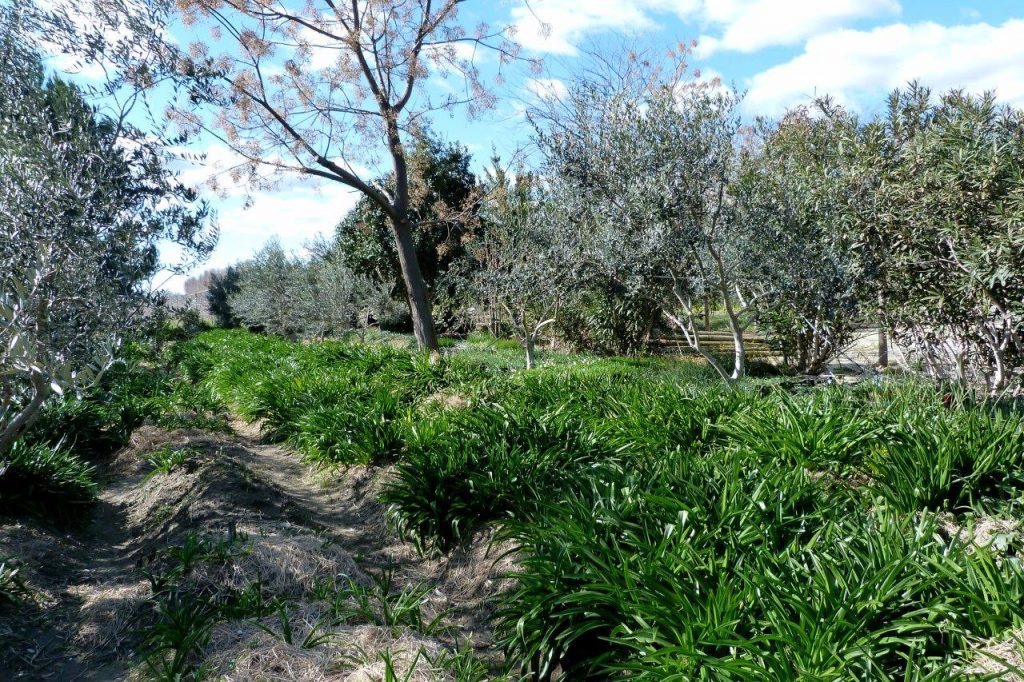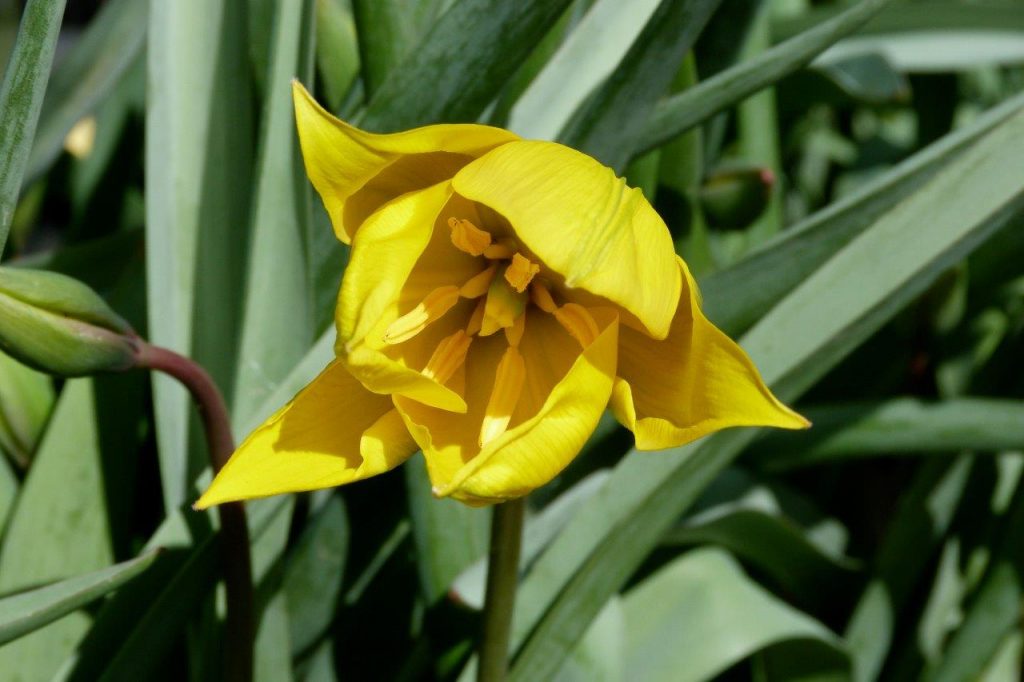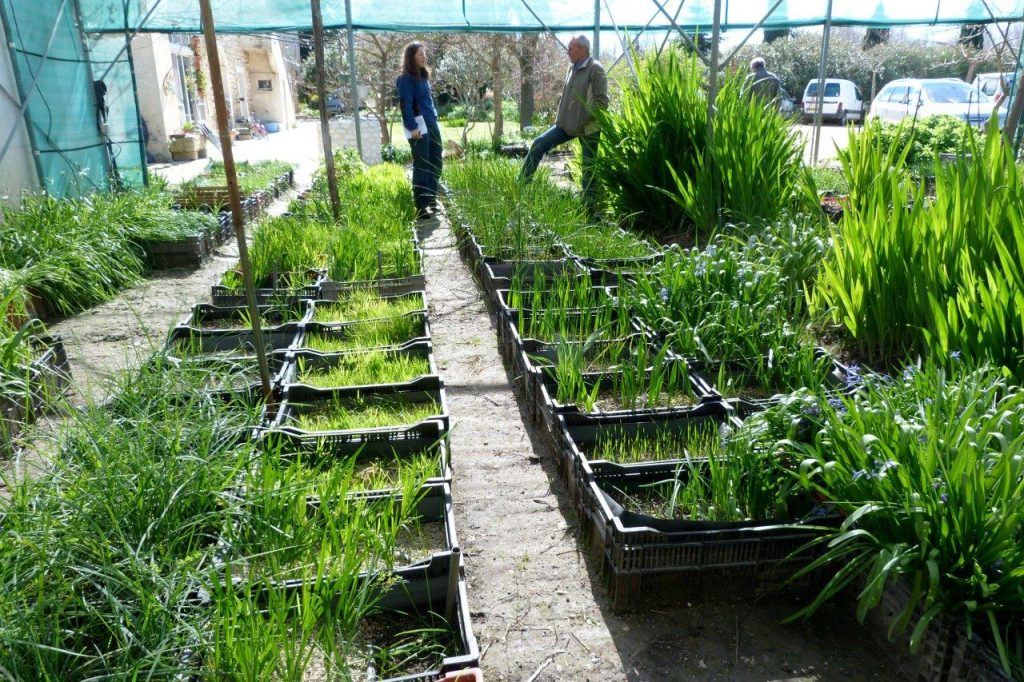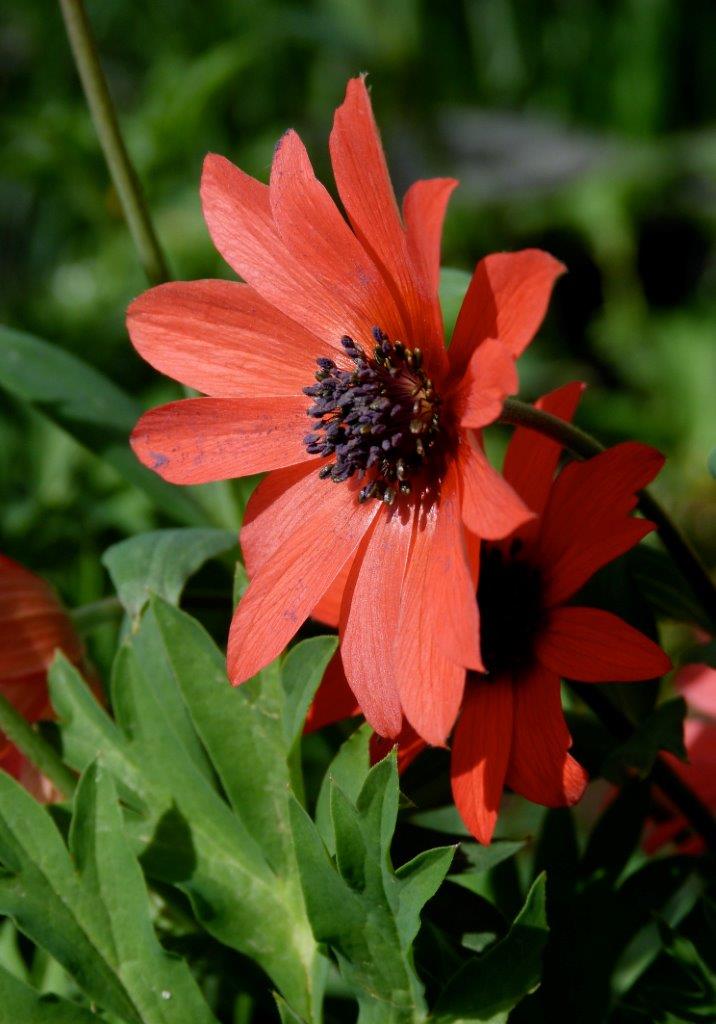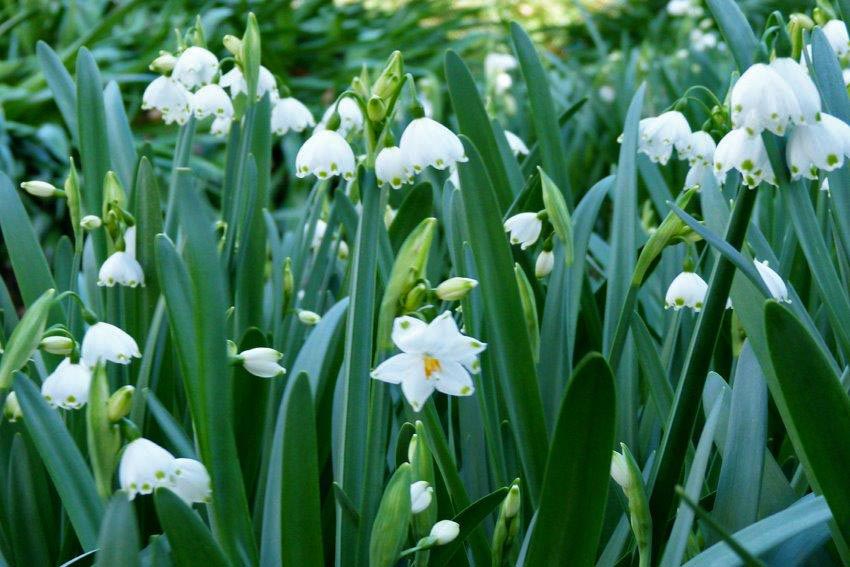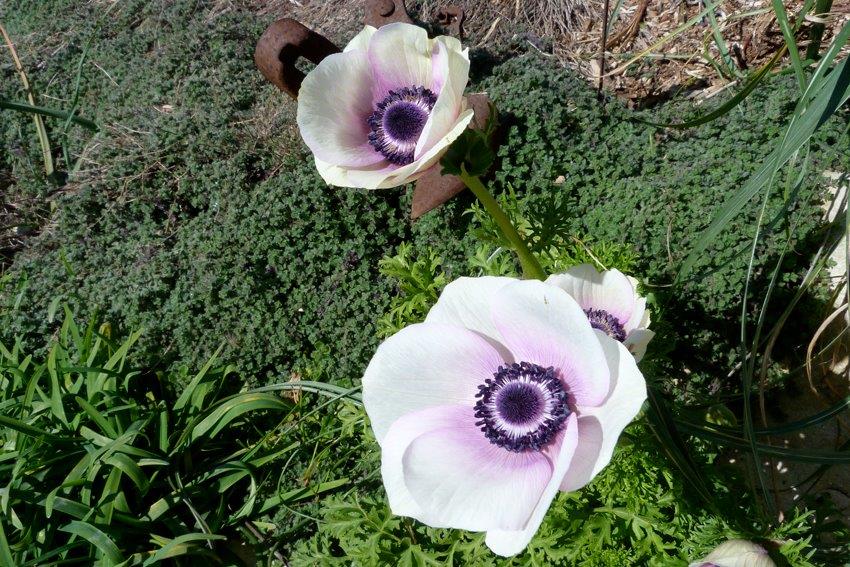March / mars 2014 – Soil Workshop at Bulb’Argence
Atelier sur les types de sols chez Bulb’Argence
Click on the images to enlarge them / Cliquez sur les images pour les agrandir
David Bracey had promised us “a fun day if messy….” and indeed he was right. We arrived with our containers of carefully mixed garden soil, jam jars, water and paper towels but before we started on the mechanical analysis of the soil we had brought with us, we were invited to rub between our fingers samples of sand, silt and clay.
David explained the properties of each type of soil, then we carried out a number of different analyses of the soil we had brought from home. The great majority of those present had clay soils, some very fine indeed, others mixed with varying proportions of other elements such as organic matter or significantly sized rocks.
David has written an article explaining how to sample and analyse soil which you can read in the Gardening section of this website.
After the workshop, our hosts, Lauw and Joelle de Jager, invited us to visit the bulb nursery and demonstration garden. The nursery has several different growing areas:
- 2 areas of raised beds
- a shade tunnel
- the front and back gardens of the owners’ home
- a rock garden in the carpark
In the main growing areas, bulbs are grown in long beds of raised earth, rather than in constructed raised beds, and are interspersed with a few olive trees and Melia azedarach. The bulbs are protected from the wind by oleander, cypress and Euonymous japonicus and mulched with local rice straw from the Camargue, mainly to prevent soil compaction from the rain. Bulbs growing here include: Iris unguicularis, Tulipa clusiana and T. sylvestris, as well as alliums, crocuses and fritillaries.
The shade tunnel houses the nursery’s most special bulbs including those from South Africa and South America. These include the bright red Anemone fulgens, Hesperantha cucullata, Hyacinthus orientalis, the large yellow Lachenalia aloides ‘Ronina’, the fragrant Muscari macrocarpum, Oxalis palmifrons and O. obtusa, the climber Tropaeolum tricolor, as well as dracunculus, freesia, moraea and ornithogalum. Growing in the ground was a huge clump of Chasmanthe bicolor. Next to the shade tunnel were rows of different narcissi.
The front garden beds are about 10 years old and shaded by two large Canary Island date palms (Phoenix canariensis) which are being treated to save them from disease; the third palm has already succumbed to the beetle. A mix of tulips, Spanish bluebells, and Narcissus ‘Tete a Tete’, were in flower.
The ‘lawn’ in the back garden consists of the ground covering plants, Dichondra repens, Achillea crithmifolia and Phyla (formerly Lippia) nodiflora. The level of the lawn is raised by a line of breeze blocks planted with bulbs to test how they grow in container conditions.
The phyla is the most invasive and would look the least attractive after a cold winter, but the other two knit together well. In flower were Anemone blanda, Chionodoxa forbesii, Crocus tommasinianus, the tall white Leucojum aestivum ‘Gravetye Giant’ and Ornithogalum umbellatum.
You can walk up and round the tiny paths of the rock garden which is a test bed of different plants to see what survives without watering. This is heavily mulched every year with shreddings and includes ground cover plants. In flower were Anenome coronaria and several narcissus species.
Text: Kate Dumbleton
Photographs: Jean Gratraud, Catriona McLean & Imogen Checketts
![]()

